A night spent with monks on Mount Kōya
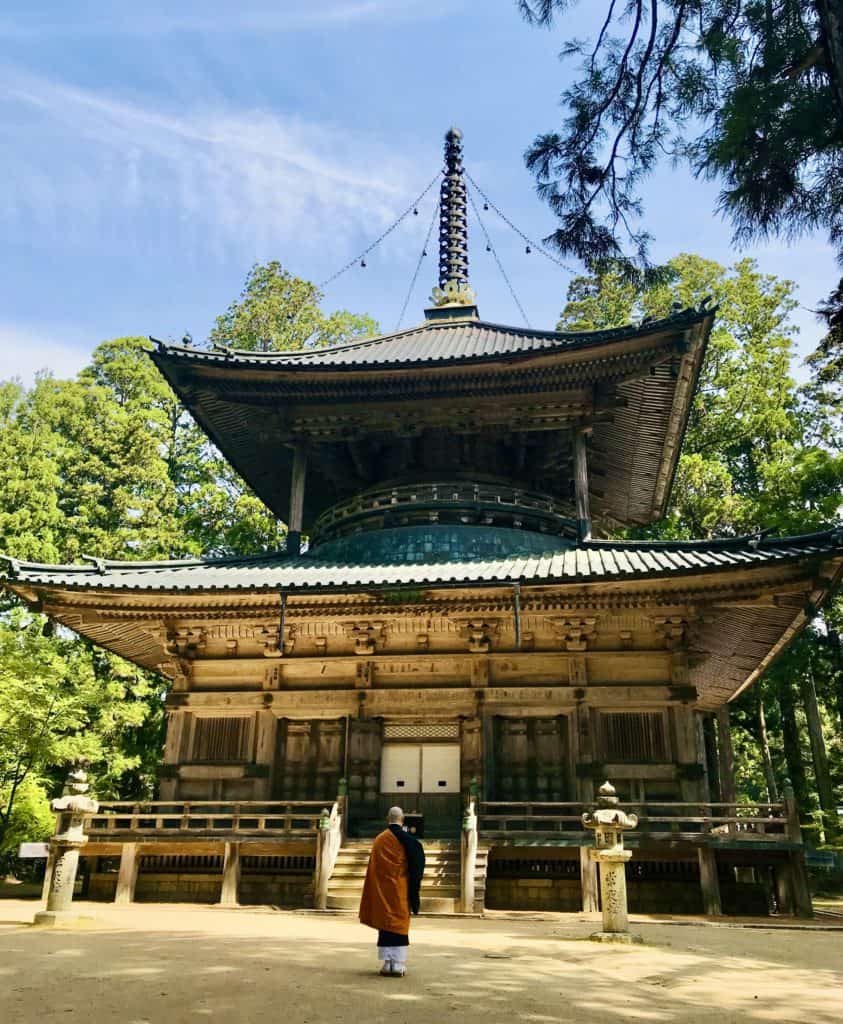
Shukubō on Mount Kōya
Mount Kōya in Wakayama Prefecture is the center of Shingon Buddhism. It is located on a plateau surrounded by eight forested peaks and connected by ancient pilgrimage routes to the Kumano Sanzan — Hongu Grand Shrine, Hayatama Grand Shrine, and Nachi Grand Shrine — the three sacred sites of the Kumano region. These sites are a quintessential example of the synchronicity of Buddhism and Shinto, with each location’s deity having both a Buddhist and a Shinto embodiment.
In 819, after first requesting the blessing of the local Shinto deities, the founder of Shingon consecrated Mount Kōya as a mountain retreat and the headquarters of his esoteric branch of Buddhism. This monk, Kukai, posthumously named Kōbō Daishi, rests in a mausoleum deep within Okunoin, the largest graveyard in Japan, atop Mount Kōya.
Today, there are over one hundred temples on Mount Kōya, many of which offer lodging to visitors. I was lucky enough to stay at such a temple several times in recent years.
Staying at a temple
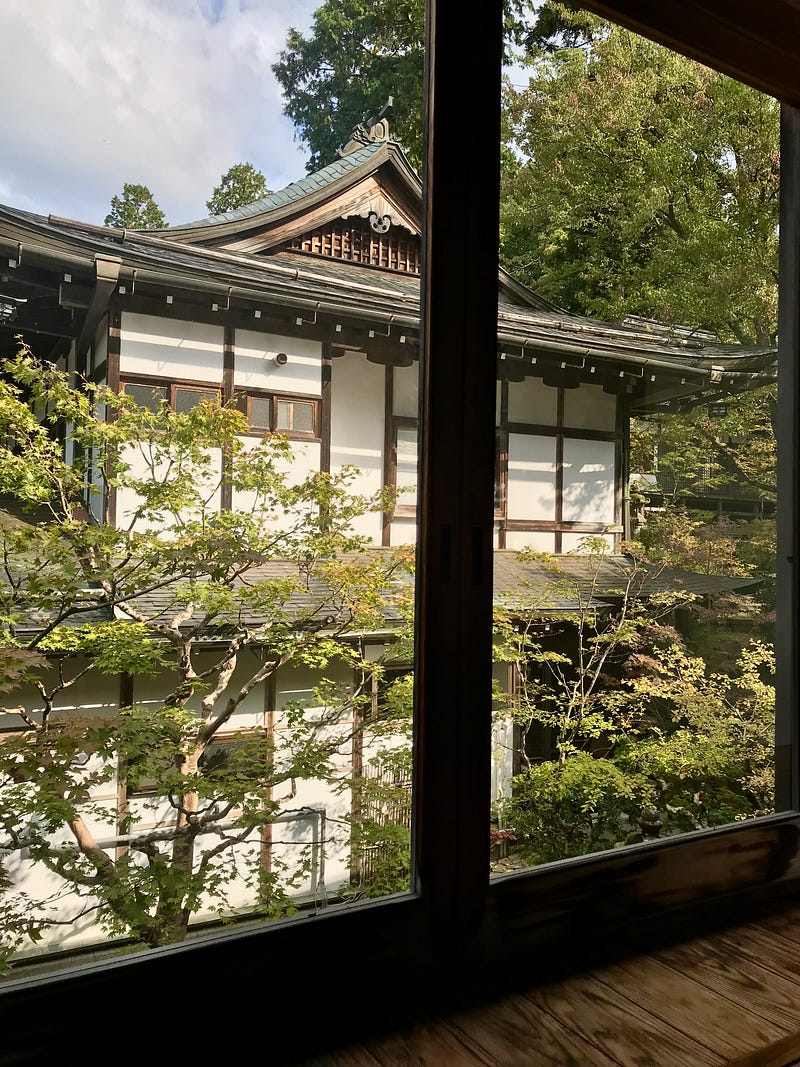
Arriving at the temple, we first take off our shoes, step up onto the raised floor of the building, and put on inside slippers. We are greeted by a monk, who gives us a tour, explaining about the onsen bath and where the dining room, restrooms, and prayer rooms are located.
It is an old wooden temple building, with squeaky, yet shiny wooden floors. After walking along the engawa hallway between the outside walls with sliding windows and the raised interior rooms, we are shown into tatami mat rooms. This is where we will spend the night. Futons will be laid out for us on the floor while we eat our dinner.
Our tatami rooms are basic and separated by sliding paper fusuma doors. There will be no secrets among us this night! The toilets down the hall are shared communally — one room for men and one for women.
We settle into our rooms, and some of us take time to relax, enjoy the atmosphere, and have the tea and simple snacks left for us on a low table in the center of each room.
In small groups, or one by one, we head to the onsen to wash, soak, and relax before dinner. We are provided with yukatas to wear after our bath, which become our evening wear. No need to worry about what to put on for dinner. We all wear yukatas. Wearing another layer underneath can help with warmth and modesty.
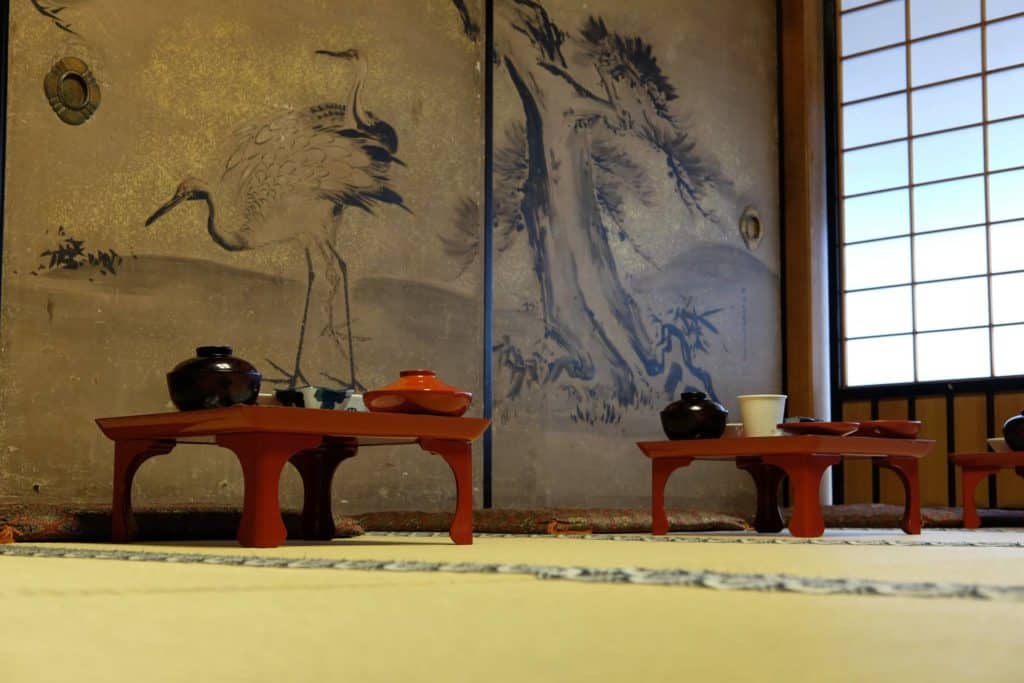
Dinner is traditional Buddhist fare called shōjin ryōri. It is vegetarian and features various types of tofu, local vegetables, and konnyaku — a rubber-like food made from the corm of the konjac plant.
Afterward, those who want to, change into warm clothing and join one of the monks for a nighttime tour of the graveyard. He explains a little about the Shingon religion, its symbolism, and points out some of the more famous graves. We walk by the 200,000 tombstones that line the nearly 2 km walkway to the mausoleum of Kōbō Daishi, at the far end of the cemetery.
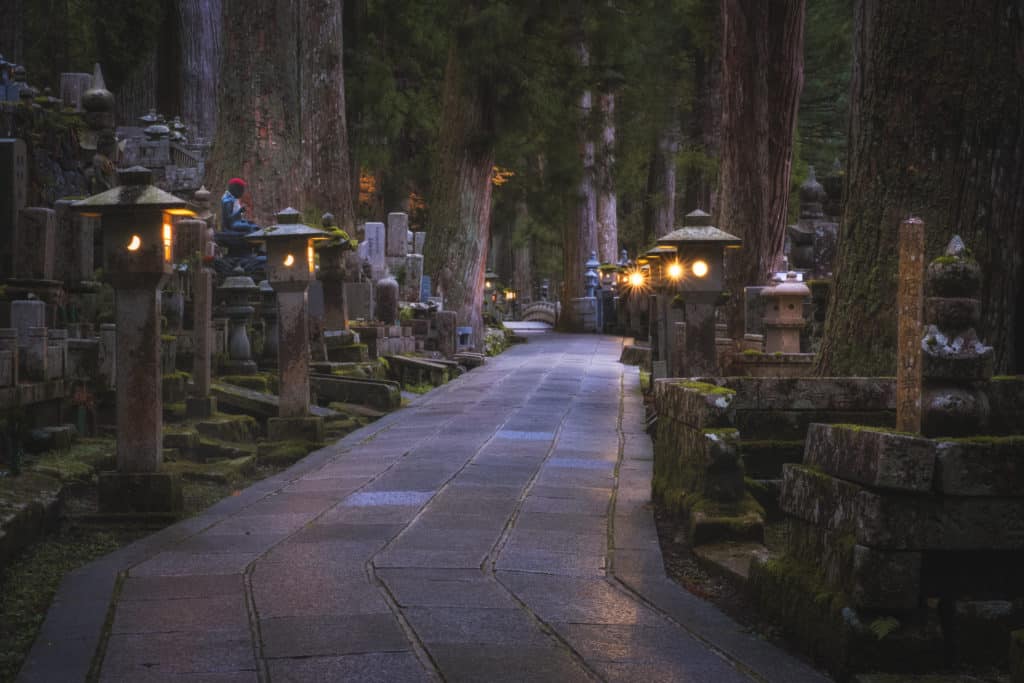
Although I realize it is a high honor to be entombed in this magnificent cemetery — sharing holy ground with the likes of Oda Nobunaga and other greats of Japanese history — I can’t help but wonder about all those souls resting so far away from their ancestral homes. The monk explains to me that, in general, the graves of Okunoin contain only the hyoid, called the “Buddha bone” in Japanese due to its shape. The remaining bones are indeed interred in their families’ graves.
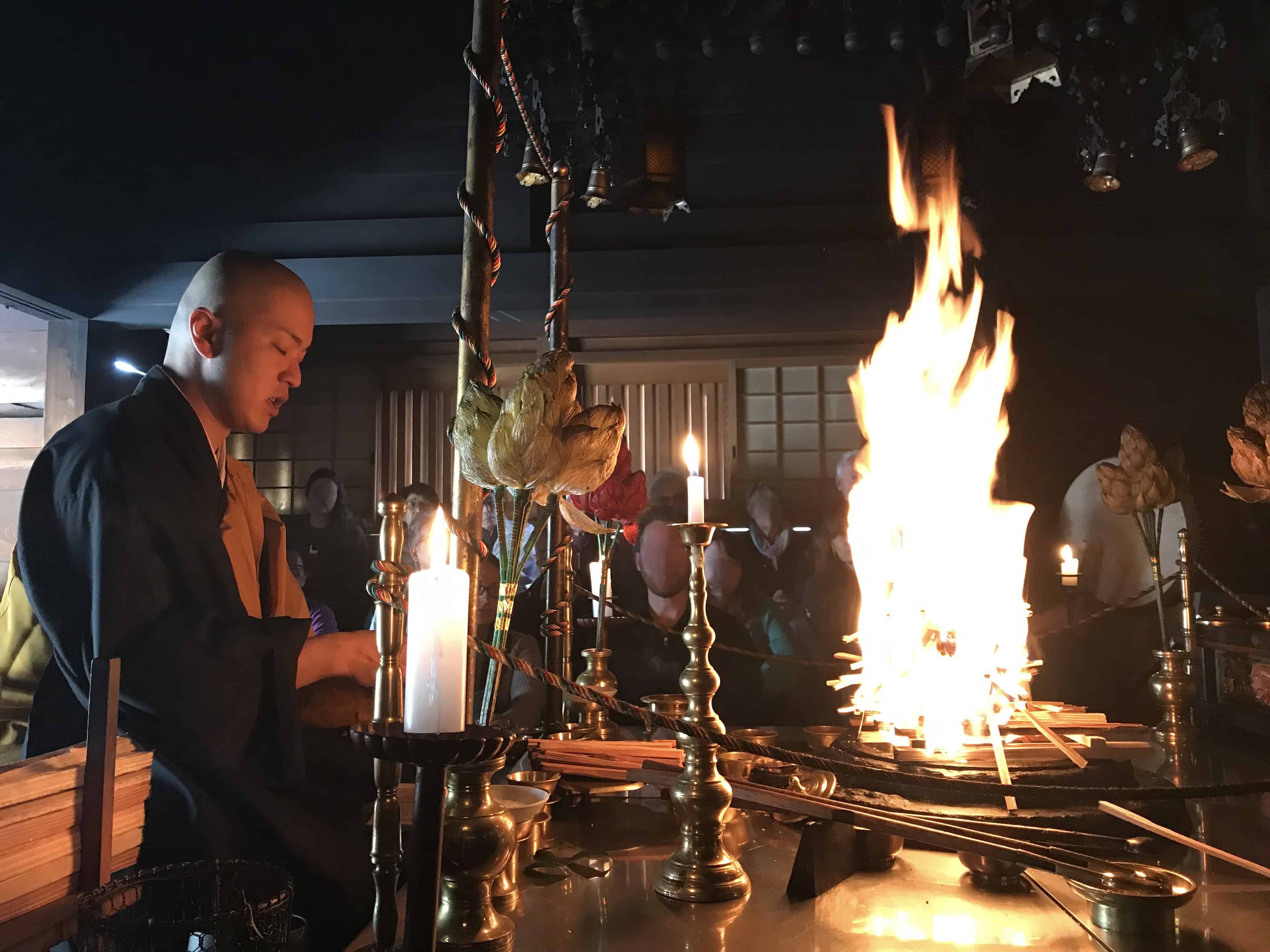
After a comfortable night’s sleep, we awaken early, dress in our regular attire, and walk down the long hallway to the prayer room. There we sit respectfully as monks perform their morning chanting service.
Next, we go outside to a separate building where the Goma fire ceremony is held. Buddhists hold that the root of all suffering is desire. In the fire ceremony, a monk burns wooden sticks upon which are written various human desires. The fire symbolizes the compassion of Fudō Myōō, the destroyer of evil, which cleanses us of those desires.
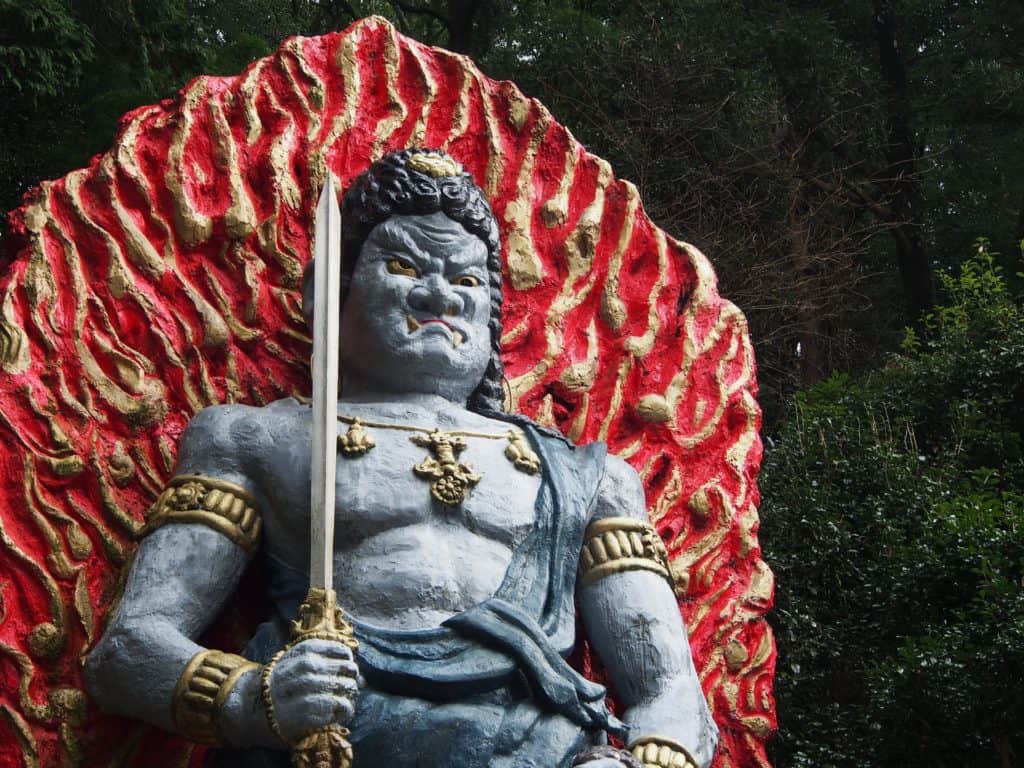
After the ceremony, we pay our respects to Fudō Myōō and his companion deities, then return to the main temple building.
A delicious vegetarian breakfast has been prepared for us. We make ourselves comfortable on cushions on the dining room floor and eat from our low tables.
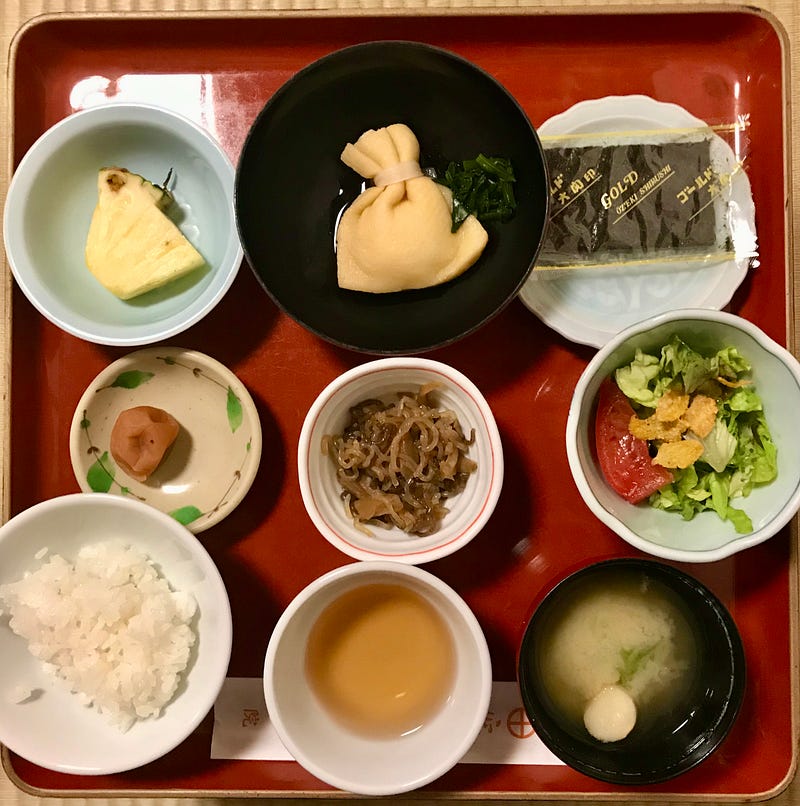
After breakfast, we bid farewell to our hosts and head out to explore the wonders of Mount Kōya.
Mount Kōya, as well as much of the Kii Peninsula of Wakayama, has been designated “Sacred Sites and Pilgrimage Routes in the Kii Mountain Range,” a UNESCO World Heritage Site. It is well worth a visit.
If you have questions about Japan or suggestions for articles, please add them in the comments. For more photos and information on Japan, follow me on instagram at: https://www.instagram.com/more_than_tokyo/




